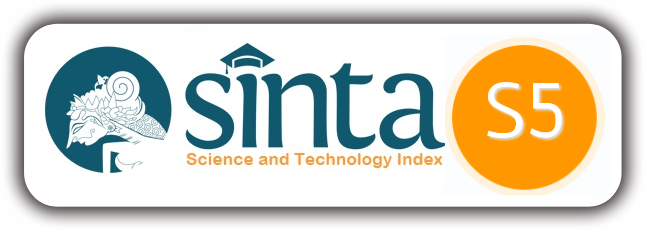Author Guidelines
Manuscripts submitted to Al-Ijtima’I Journal will be considered for publication if they meet the following criteria:
- Scientific writing, in the form of studies on social and political issues, original ideas, summaries of research / survey results, and / or book reviews that are considered to be able to contribute to society and science.
- Manuscripts are never been published in any publication or not being requested or considered for publication by other media.
- Manuscripts are written in Bahasa Indonesia or English Language which meets standard of scientific writing.
- Submitted manuscripts must comply with the applicable AL-IJTIMA'`I: International Journal of Government and Social Science Template
- Each manuscript is written consecutively consisting of the title, the author's name, abstract, keywords, contents of the manuscript (introduction, method, research results, discussion, cover and bibliography) (Follow the template);
- The title must be concise and clear, may include a subheading with a maximum total of 14 words.
- The name of the author is written without any academic degree.
- Make a brief biography of the author as a footnote to the author's name, by including the institution, address, email and other information deemed necessary.
- Abstracts are written between 150-200 words using Bahasa Indonesia and English. The abstract contains the objectives, methods, and research results (if the manuscrit is an original research); and background of the problem, discussion, and conclusion (if the manuscript is a critical literature review).
- Include a maximum of five words that reflect the substance of the manuscript.
- The article body is written in 5000-8000 words, using Book Antiqua font size 11 with 1.2 spaces. JAI templates can be downloaded on the website.
- Manuscripts are written using in notes as a reference source by following the 6th ed. APA style, as follows:
- Sanjaya (2010: 14), says that "Essays are easy to make, but more difficult to assess accurately ...".
- As stated by Mehraens & Lehmann (1986: 75), essay tests are relatively (reliably) since they are graded by humans (who may be subjective) rather than by impersonal Machines. Essay tests are relatively (reliably) since they are graded by humans (who may be subjective) reather than by impersonal (Machines Mehraens & Lehmann, 1986: 75).
- Additional information related to further explanation regarding the citation within the contents of the manuscript, then footnotes will be used.
- The manuscript must include a bibliography.
- All citations in the text must appear in the list of references, and all references must be cited in the text.
- Bibliography is arranged alphabetically following APA style 6th ed, containing the name of the author, year of publication, title of book / magazine / journal, city of publication and name of publisher.
- Bibliography does not need to be numbered, and the author's name is reversed or the last name is written first. The author's name does not need to include academic degree.
- The beginning of each noun and verb in the book title is written in capital letters. Book titles must be italicized. Example:
- Audi, Robert (2000). Religious Commitment and Secular Reason. New York: Cambridge Univesity Press.
- If the reference is a journal, then the journal name is italicized. The volume, edition and journal page are also included.
- Example:
- Dumanig, F.R. (2014). Social Capital and Politeness Strategies in Fostering Ethnic Relations in Malaysia and Philippines. Jurnal Ilmiah Peuradeun. 2 (3): 23-38.
- The manuscript is typed in a JAI script template which can be downloaded from the website.
- Manuscripts are submitted to the JAI editorial staff via the SUBMIT PAPER form available on the JAI website.
- Manuscripts will go through a peer review and an editing processes without changing the substance.
- Manuscripts submitted to the editorial board are categorized as: 1) Accepted without revision; 2) Accepted with revision; and 3) Rejected. The decision of publication or rejection will be informed through the author’s email address.
Editorial email: jurnalijtimai@ar-raniry.ac.id
Cp. 0823-3139-4034
Regards,
JAI Editorial Board














